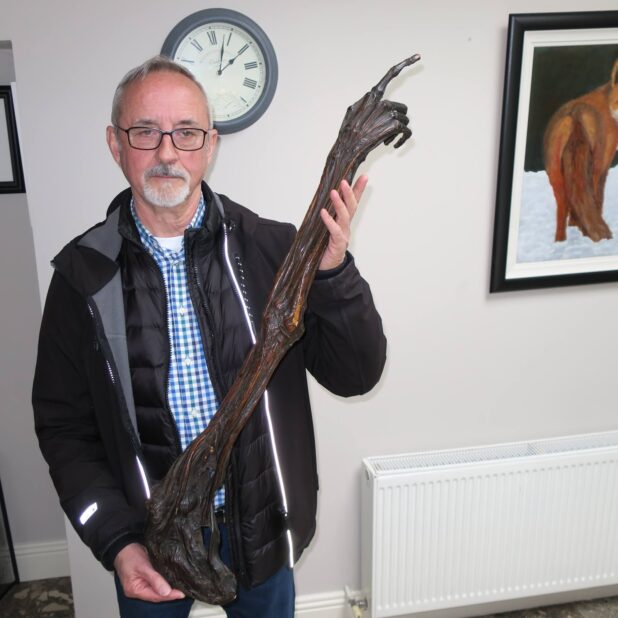Understanding Dan Donnelly’s rise to fame
The Role of the Hero in Irish Folk Tradition.
One powerful reason that Dan Donnelly became the folk hero that inspired Ireland was that the Irish have a deep emotional attachment to lone heroes who defend their country and its honour in single combat. Donnelly’s story resonated powerfully within the Irish psyche, reminding us of the warrior Cu Chulainn, who, while his comrades were debilitated by a curse, defended Ulster against the invading army of Queen Maeve of Connacht, delaying the invading army by agreeing to fight against a champion of Queen Maeve in single combat each day until the curse had ended.
Political Context
Another key to understanding the significance of Dan Donnelly’s defeats of his formidable English opponents is the political climate between Ireland and Britain and the atmosphere which prevailed within Ireland at that time. The native Irish deeply resented the centuries long colonisation and occupation of their country by the forces of the English crown.
After its loss of its American colonies during the American Revolution, Britain had recovered strongly. The Duke of Wellington had defeated Napolean at Waterloo and Britain was busy extending its Empire and influence into India.
The United Irishmen’s 1798 rebellion against British rule had been defeated, and the brutal reprisals carried out against the surrendering rebels and the civilian population at large had deepened the hatred most Irish felt towards their colonisers. Irish Catholics were profoundly discriminated against in all aspects of Irish life and the movement for Catholic emancipation had begun. In addition to this, the Acts of Union, which came into effect in 1801, had abolished the Irish parliament in Dublin and Ireland was now under direct rule from London.
Dan Donnelly’s achievements in pugilism against the best Britain could throw at him raised Irish morale at the time when it was needed most.
Donnelly’s Achilles Heel
Unfortunately, Dan Donnelly’s fondness for alcohol also became a part of his story and his excessive drinking became legendary. In fact, during his training in Calverstown, Co. Kildare,for his fight against Tom Hall, Captain Kelly, his sponsor, is reported to have prevented Donnelly’s escape to local public houses by posting guards around his training site.
He is known to have run at least four public houses. However, none of them were profitable, probably because his own excessive drinking sabotaged his ability to run them efficienctly.
One of his pubs was in Capel Street, one in Poolbeg Street, another on the Coombe and his final one was Donnelly’s Pub in Pill Lane, where, in all likelihood as a result of his excessive drinking, he died on February 18th 1820. The amount of punishment he suffered during his bare-knuckle bouts may also have contributed to his early demise. The only one of his public houses still open today is Fallon’s ‘The Capstan Bar’ on the Coombe.
Donnelly’s Arm
Donnelly’s right arm would become a legend in its own right after being removed from his body post mortem and embarking on its journey to fame which has lasted more than 200 years.
After his burial in Bully’s Acre, graverobbers dug up his corpse and after selling it to a Dublin surgeon, a public outcry resulted in the corpse being returned minus its right arm which was coated in red lead for preservation and used for the instruction of medical students and anatomists.
At one point, it was sent to an Edinburgh medical school to be used for the instruction of medical students. After that, it became an exhibit in a Victorian travelling circus and in 1899 it was reported to be part of an exhibition in Belfast. At some point after that, it was acquired by the Irish proprietor of a London newspaper called Frank Bradley.
In 1924 it is reported to have been bought by Belfast bookmaker Tex McAlevey, who displayed it at his various betting shops and it was displayed in a pub in Belfast called the Duncairn Arms, where it was put on display in the 1950’s. It then continued its journey to the Hideout pub in Kilcullen, where, as part of a pageant recreating the fight between Donnelly and Cooper, the pubs owner Jim Byrne displayed it in a glass case above the fireplace. The arm became a popular attraction for more than 40 years until the pub was sold in 1997. The arm remained in the care of relatives of the Byrne family, who had owned the Hideout, but it was kept hidden in their basement.
The arm, however, was destined for more fame when an American relative of Donnelly, Thomas Donnelly, began a search for Donnelly’s arm. Following a media appeal in Ireland, the arm was located and flown to the United States in the cockpit of an Aer Lingus passenger jet.
As the centre-piece of the Fighting Irish Exhibitiom, it began a tour of the United States, where in the autumn of 2006 it was exhibited at the Irish Arts Centre in New York then it travelled to Boston College before returning to Ireland where it was exhibited in 2009 in Omagh at the Ulster American Folk Park in Co Tyrone and in 2010 at Croke Park and later at the University of Limerick as part of the European City of Sport celebrations.
The current custodians of the arm are Josephine Byrne, the widow of the Hideout’s pub original owner Des Byrne, and her family.
Dan Donnelly was inducted into the Boxing Hall of Fame in 2008 in the pioneer’s category. Contrary to legend, his arms are reported to be of normal length for a man of his height.









